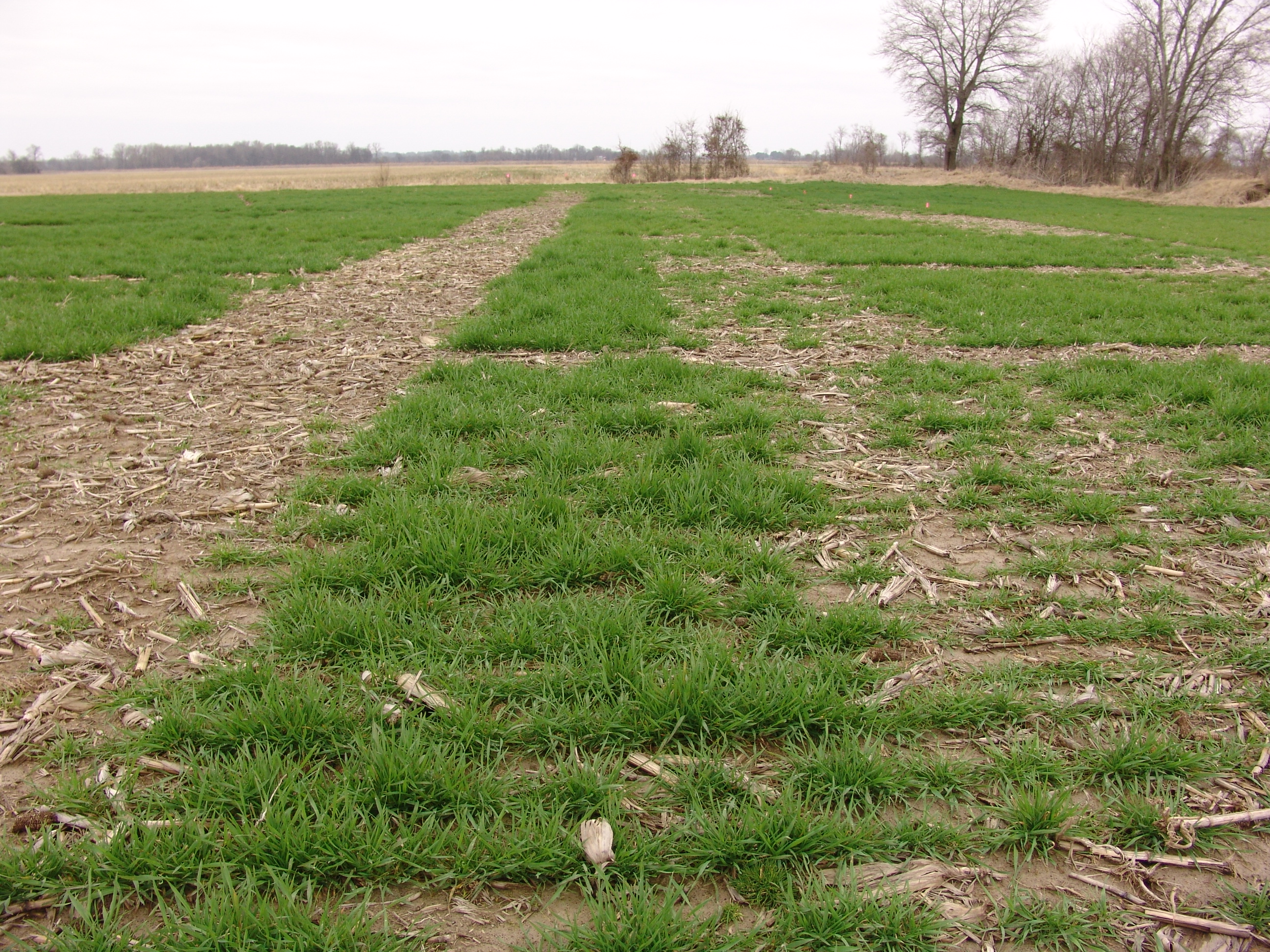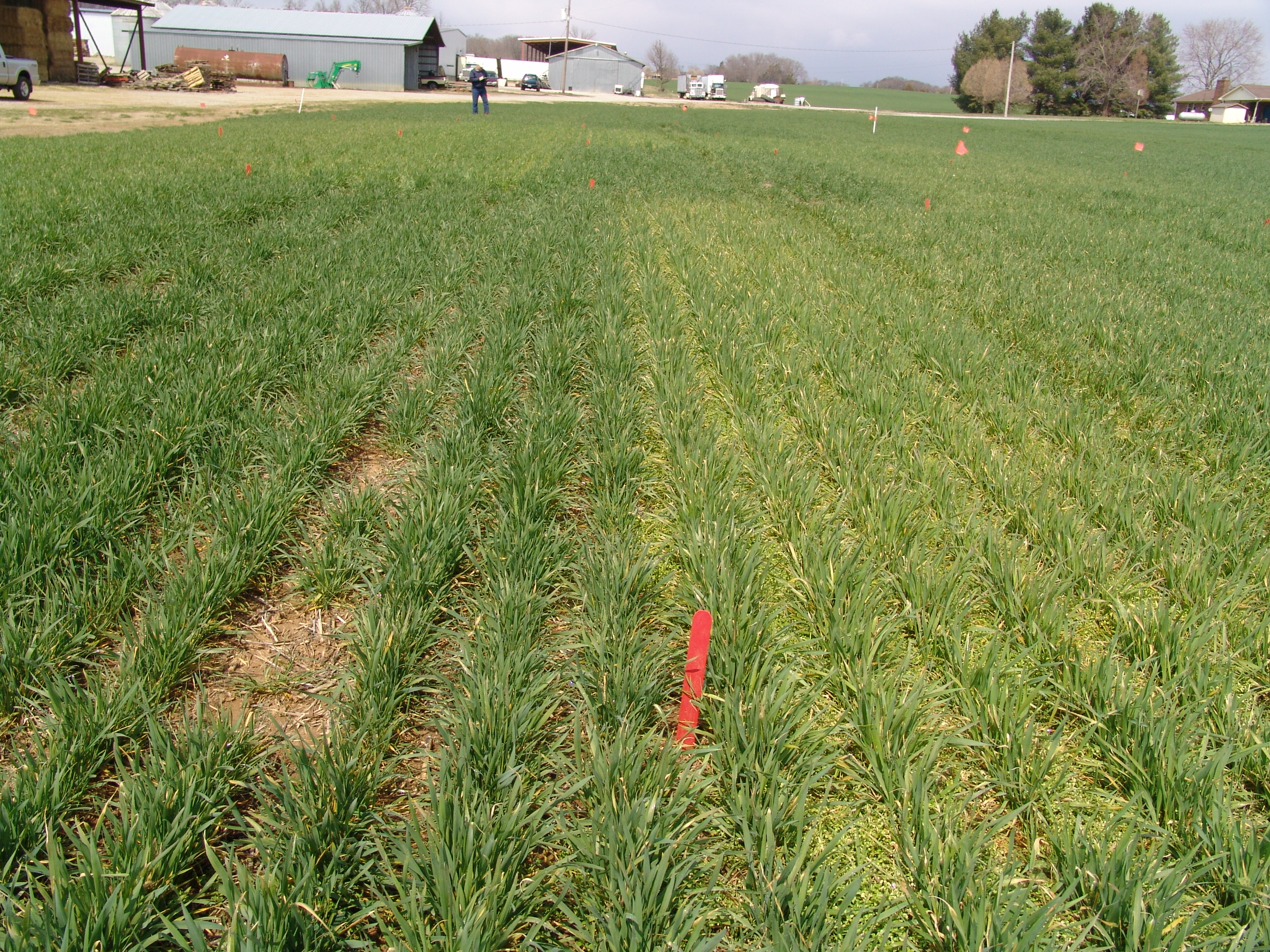Tennessee, USA
April 2, 2014
Author: Larry Steckel, Extension Weed Specialist, University of Tennessee

Left strip is 12 oz of metribuzin and right strip is 6 oz metribuzin Obion County Variety Test
There has been more metribuzin injury on wheat stands this year than we have seen in more than a decade. This has been very evident in research trials as well as walking some grower’s wheat fields. Metribuzin rates as low as 2 to 3 oz/A has occasionally thinned wheat stands in some fields.
The best example of this is the metribuzin wheat variety tolerance screen we conduct across the back end of some of the county wheat variety tests. In each year we conduct the study, we examine two metribuzin rates, 6 and 12 oz/A. In the past, we rarely if ever saw any wheat varieties show injury to the 6 oz/A rate, which is why we also look at the higher 12 oz/A rate. Often we only saw 30 to 40% injury with susceptible varieties even at that high rate.
This year in a couple of the county wheat variety tests, we had 70 to 95% injury at that higher rate across all the varieties and anywhere from 20 to 70% injury at the lower 6 oz/A (Picture above).
Fortunately, most Tennessee growers use rates that range between 2 to 3 oz/A. As a result, wheat stands in most injured fields are for the most part still robust enough to produce a good crop.
So what caused this increase in wheat injury? I think there are a number of reasons for this. First, there was more metribuzin applied in the fall of 2013 than in past years which increases the odds that an environment could be found that would promote injury. Second, this herbicide was applied to wheat that was often late planted and had not gotten its first tiller at time of application. Most wheat varieties have much better tolerance to metribuzin once it reaches its first tiller.
On top of this, the very cold winter really curtailed the wheat’s ability to overcome fall injury. More injury was found in areas where wheat was covered with several inches of ice for a week or more.
On the positive side, 2 to 3 oz/A of metribuzin applied in the fall did provide enough control of poa and ALS-resistant chickweed that the loss of stand was more than offset by the wheat not competing with those two competitive weeds (picture below).

Left 2 oz metribuzin providing good chickweed control. right Harmony providing no control of ALS-resistant chickweed
I think the take home point here is that metribuzin can be a very effective tool, particularly on poa and ALS-resistant chickweed. However, it should be used with caution by utilizing it on wheat that has developed a tiller and at rates no higher than 3 ozs/A applied in the fall.